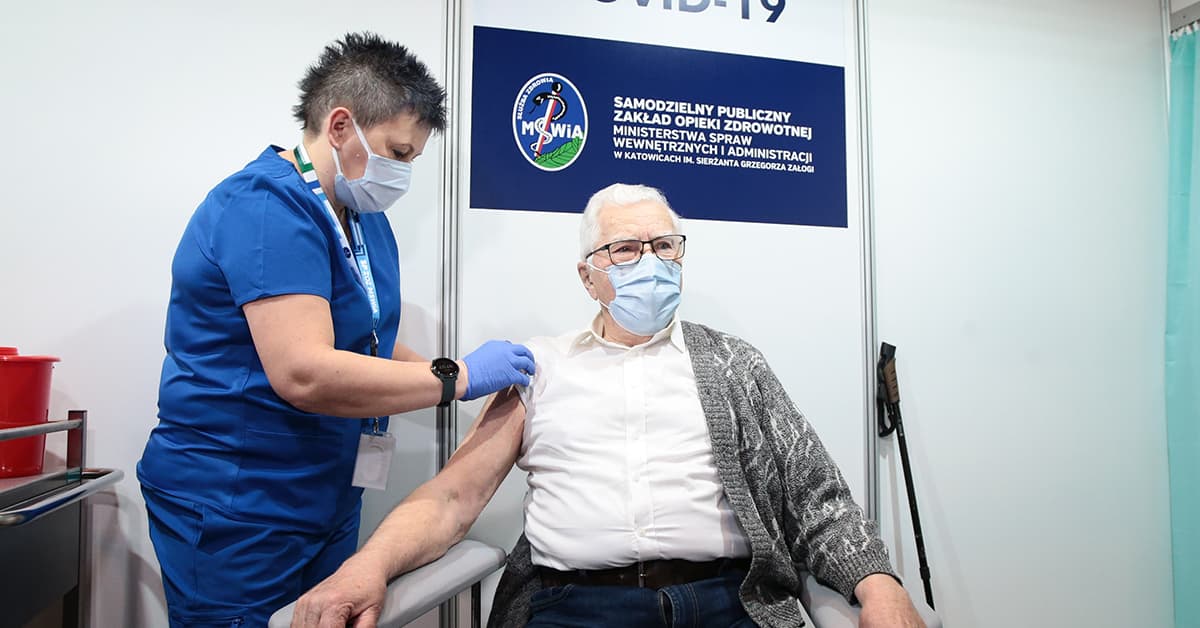The CEE’s hard-working citizens and well-adjusted economy are crucial to post-Covid recovery.

As the world continues to grapple with the Covid-19 pandemic, Central and Eastern Europe (CEE) and South Eastern Europe (SEE) seem to have weathered the ensuing economic storm better than expected. According to ING Bank, the Czech Republic is on track to achieve 3% GDP growth this year, after a 5.6% decline in 2020, while Hungary will likely make up for last year’s 5% decline in GDP with an expected increase of 5.4%. Meanwhile, Poland should see 4.5% GDP growth, more than compensating for the 2.7% contraction over 2020.
“Polish PMI components show new orders are growing strongly, with expected orders growing at the fastest pace since September 2017,” ING Bank said, adding that key challenges are “supply chain disruption, labor market woes and the third wave of Covid-19.”
Capital Economics echoes this optimism, pointing out that Romania grew by an impressive 5.5% in Q4 2020. The London-based economic research consultancy forecasts a pick-up in activity across the region tempered by the assertion that “recovery will hinge on the pace of the vaccine roll-outs, with early signs not encouraging.”
In explaining the CEE and SEE’s resilience, economists point to their diversified economies, a generally well-educated workforce able to adapt and go where the work is, a growing middle class, close integration into EU, and global supply chains, and a generally strong and dynamic export sector. These are all true, but other factors have increasingly been at play.
When the transition toward market-oriented economies started back in 1990, the region’s appeal was cheap labor coupled with proximity to key EU nations like Austria and Germany, and a reputation for excellence in such sectors as autos, electrics and petrochemicals. The investment this attracted defined growth until the 2008 financial crisis. Since then, however, governments, investors and companies have been moving toward more value-added production and services, mindful that they cannot—and indeed, don’t want—to compete with Asian or North African wage levels but also aware they need to avoid the middle-income trap. Still, emerging new businesses are cognizant that the region’s advantages position it perfectly for growth.
“The authorities see it as a priority to foster local companies and start-ups, in many cases utilizing the money made available by Brussels (including its Cohesion Funds) and by IFIs,” says Grzegorz Zielinski, the EBRD’s regional director and head of Central Europe and the Baltic States.
Counting on Innovation
Innovation and venture capital have been key drivers, particularly for the ICT sector and with both the public and private sectors now being fully digitized. Estonia—perhaps the world’s most digitized economy—lies at one extreme, but other countries are catching up, aided by public investment in 5G, broadband fiber optics and better ICT education.
“The ongoing development of tech in this region needs wider recognition,” says Paul Juszkiewicz, head of business development at GPW Tech, part of the Warsaw Stock Exchange group. He notes that Estonia has nine times India’s number of IT employees per 100,000 people and that emerging Europe as a whole has four times as many.
This has enabled the emergence of successful local ICT SMEs and unicorns alongside more familiar international names like Orange. Romania has established a global reputation for robotic process automation companies led by UiPath, which started out of a local garage in 2005 but is now headquartered in New York and valued at $35 billion. The historic city of Cluj in Transylvania became one of Europe’s fast emerging IT hubs, while Poland has seen major IT hubs emerge in Katowice, Poznan and Wroclaw. Bulgaria, meanwhile, has become a major outsourcing hub, described by Kearney as the “top location for IT centers, providing many services for multinational companies as well as domestic ones.”
There has also been a dramatic pandemic-fueled rise in e-commerce. Allegro, Poland’s answer to Amazon, is now the largest listed company on the Warsaw Stock Exchange with a market cap of $15 billion, making it bigger than national oil company PKN Orlen. In Romania, eMag has become the biggest online retailer and also established a physical presence.
Horst Ebhardt, Vienna-based partner and co-head of the corporate/M&A team at Wolf Theiss, one of the largest legal firms in CEE and SEE, suggests the dynamics reflect a move away from the traditional model with its focus on heavy manufacturing, toward a more diverse, modern economic base, marked by technology hubs and an emphasis on more value-added activity.
“As well as up-scaling and attracting more complex types of investment, the region is also benefitting from near-shoring,” Theiss says. “Multinationals and others are relocating from China and elsewhere to this region, with its good legal and education systems and, [countries] which are more secure, being next door to or within the EU.”
This up-scaling has become particularly apparent in the auto industry. For the past 20 years, it has been the main driver of manufacturing in CEE, with Slovakia the largest per capita producer of cars in the world, followed by Hungary and the Czech Republic. Plants in the region produce the latest hi-tech vehicles from Audi, BMW and other brands. Poland and the Baltics also play important roles in providing components to the industry, and last year Poland launched its new electric car, the Izera, with more models to follow. As the global auto industry modernizes, greens and shifts toward electric cars, CEE won’t be a laggard.
“There is a huge value chain already there to service the existing auto industry, so everything should be in place for the electric revolution when it happens,” says Zielinski, noting that the transformation has only really been held back by a shortage of electric batteries.
Yet even this is changing as companies establish facilities to power production. EBRD and the EIB provided loans to LG Chem’s new battery giga-factory in Wroclaw, whilst Johnson Matthey also established a new battery materials factory in Poland, supported by another EBRD loan. Zielinski says more manufacturing sites in Slovakia and Hungary are in the pipeline.
He maintains that although the pandemic has caused some disruption to CEE’s auto industry—notably on the demand side—the advanced production processes there, coupled with social distancing and other measures, have kept it to a minimum.
The other big sector that is fast evolving is renewable energy. Mindful of the need to improve the environment and reduce dependence on Russian oil, authorities have put a green agenda at the forefront of their plans. However, countries are at varying stages: Latvia now has 40% of its electricity generated by hydro, while at the other extreme Poland remains heavily dependent on coal and lignite, which continue to account for 70% of energy generation. That is down from 80% ten years ago, but there is still obviously a long way to go.
“Sticking with coal-based power generation is unsustainable, which means choosing to go with nuclear or renewable. Nuclear is expensive, with plants taking maybe a decade and a half to build; so that leaves renewable,” Zielinski says. “With technology getting better and cheaper, we are seeing considerable activity, particularly with on-shore wind and PV [photovoltaic] solar, but increasingly more capex-intensive off-shore wind.” He suggests over-liquid Polish banks are ready to invest in this, with the government passing an offshore wind generation act in January. The plan is to install 3.8 gigawatts worth of turbines by 2030, 10 gigawatts by 2040 and 28 gigawatts by 2050, making Poland by far the biggest offshore wind producer in the Baltic.
Room to Grow for Renewables
Konrad Kosicki, who advises energy clients for Wolf Theiss, says the alternative/renewable energy market in Poland and elsewhere in CEE is hot right now. “Rising electricity prices and new technologies have given the sector a boost,” he says. “The 10 gigawatts generated by wind and the 2 gigawatts by solar is just a start.”
A priority going forward will be better infrastructure, something which lags in key countries such as Poland and Romania. Many governments have prioritized investment in railroads, noting its green appeal, and EU monies have been made available to support the upgrading and expansion of the network. Road investment is also proceeding apace, although much more is needed, particularly to boost north-south connectivity. A big plus will be the eventual completion of the Via Carpathia, linking the Baltic Sea at Lithuania’s Port of Klaipeda to the Black Sea at Constanta in Romania, going through Poland, Slovakia, Hungary and Romania.
Besides ongoing improvements to broadband and 5G networks, Zielinski sees district heating as another priority, with local companies needing to link more to local power distribution networks and use green energies like biomass to help improve air quality.



